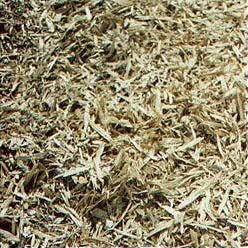
Vital for the preservation of the horse's leg is a solid footing in your arena. A huge amount of equines annually suffer leg injuries or leg damage due to an over-capacity of pressure on the legs.
Footing's main purpose it to function as a shock absorber for each pace the horse takes. A well conditioned footing ensures each shock wave to be softened for the horses hocks, stifles, hooves and canon bones.
Many equestrians reflect about the most efficient footing for their arena and how to keep this layer in shape. The famous Duckek footing is a luxury which most of us can not afford to have in the outside or inside arena. Duckek's footing is mainly based on white sand mixed with pieces of felt. A less expensive but definitely a top quality footing is one made with wood chips. The image on your right shows you a typical wood shavings based footing. It consists of a bottom layer of white sand (to absorb water) and a top layer of long wood chips and smaller wood snippets. In prime condition one can only see the long shavings, but after a year the snippets have mixed with the white sand and your arena will still have a quality soil for dressage riding. These wood shavings can be purchased at a local (bigger) saw mill and cost about $525 for a 20 x 60 ring.
If it is impossible to make your arena soft with wood chips than try look for other means that can make the sand lighter and more "elastesque". Do not forget that it's very important to keep your footing in condition by regularly flattening the arena and by avoiding the track to become a ditch. Your horse will be much more pleased to perform its lateral movements without having to climb the Mount Everest.
Image copyrighted by Astrid Appels